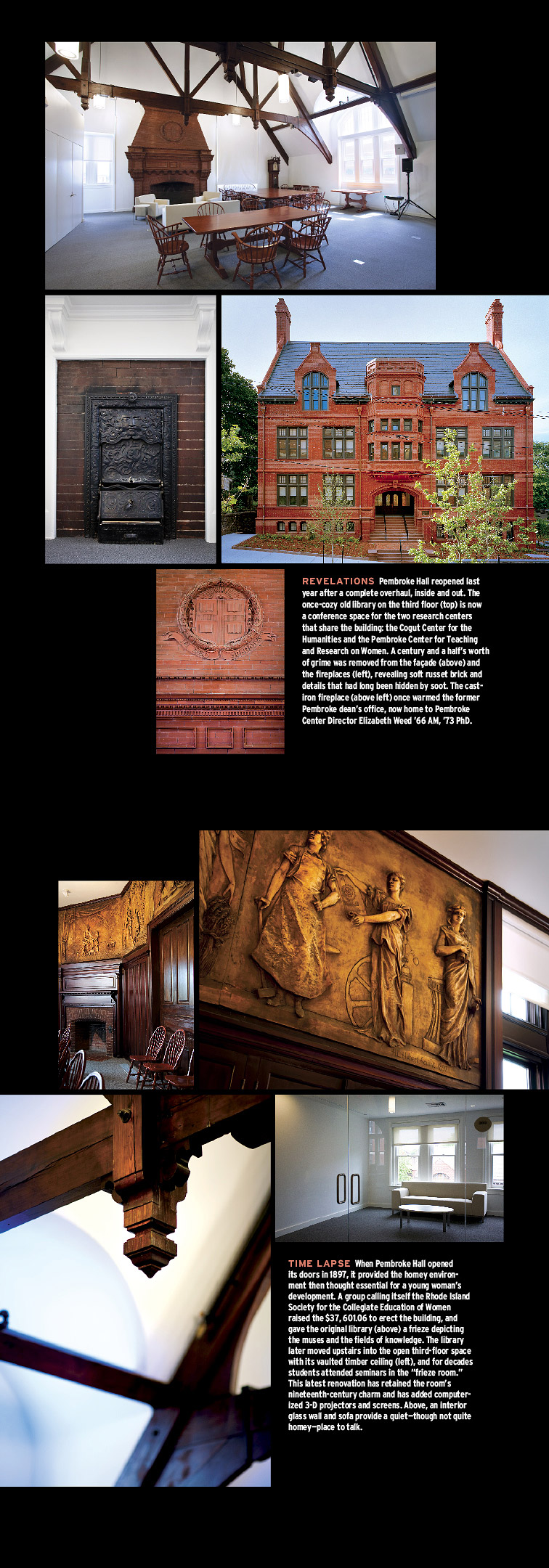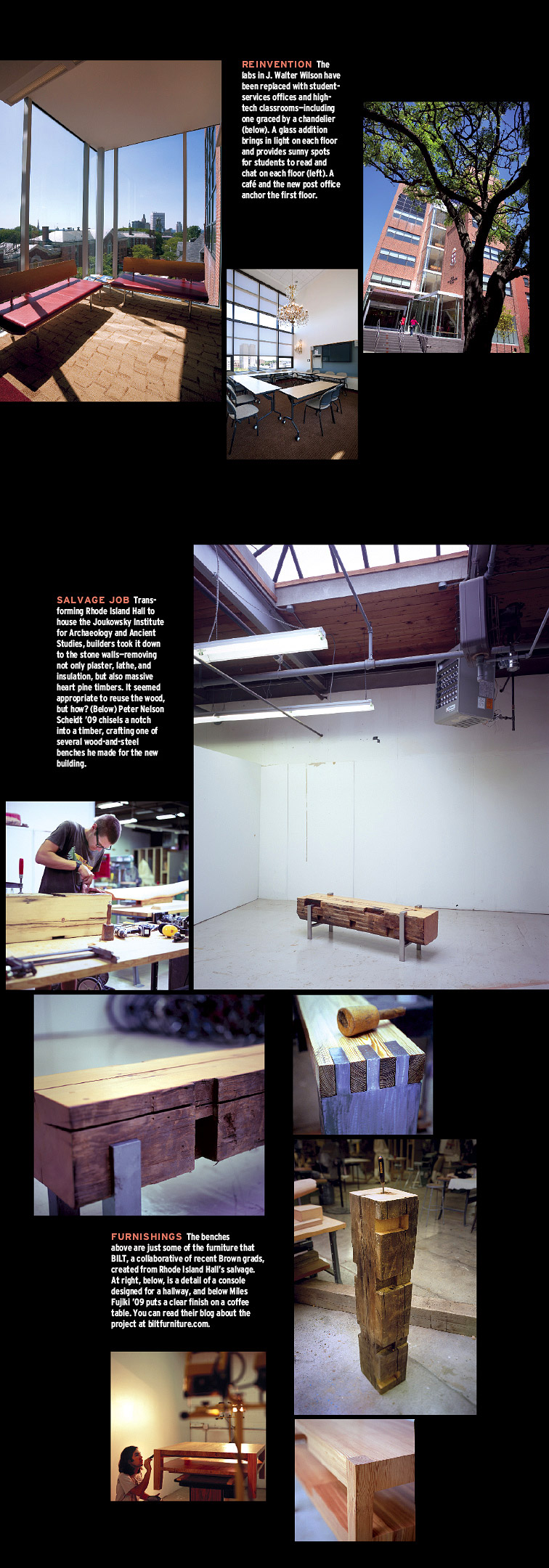It's easy to imagine Brown in summer as a serene and verdant place, with graduate students and professors strolling leisurely under the elms en route to the library.
But that would be the stuff of fantasy—or distant memory at least. For the past few years an army of construction vehicles has rumbled onto campus even as the Commencement platform was being dismantled. The Friday before this year's Commencement, in fact, Brown broke ground on the Creative Arts Center on Waterman Street along the Pembroke Walk. Before you could blink, backhoes were gouging an immense crater along Angell Street, excavating for the foundation.

Maintaining a campus as old as Brown's is always a game of catch-up, and not surprisingly the list of facilities in need of renovation has grown long in recent decades. No wonder, then, that this summer, 131 construction projects were under way on campus. University officials estimate that they've spent $31 million on construction between May and September—$12 million of it on labor, which, by creating jobs for about 300 construction and trades workers, has come at a critical time in Rhode Island's battle against a 12.9 percent unemployment rate.
All summer long, workers with jackhammers tore up sidewalks, and trucks hauled away the rubble. Outside historic buildings, dumpsters overflowed with the detritus of centuries: lathe and horsehair plaster, crumbled stucco and mortar, old gas pipes and remnants of knob-and-tube wiring. In their place have come insulated windows, energy-efficient heating and lighting systems, and the components of state-of-the-art "smart classrooms." All of the new construction has met the standards for at least silver LEED certification.

Alumni returning to campus over the next few years will see some transformed buildings on the College Green. After Wilson Hall (not to be confused with J. Walter Wilson) got a facelift, attention turned across the Green to Rhode Island Hall, whose restoration was completed as the BAM was going to press, and Faunce House, which will be transformed over the coming year into the Stephen Robert '62 Campus Center.
The renovation of Rhode Island Hall is Exhibit A in the philosophy driving much of the new work-in-progress. This massive Greek Revival building, which anchors the southwest corner of the Green, was stripped down to its rubble walls and completely rebuilt. It opens this fall as the Artemis A. W. and Martha Sharp Joukowsky Institute for Archaeology and Ancient Studies. (We'll include photos in an upcoming BAM.) While providing all the newest technological aids to teaching and research, the building also includes glass panels allowing visitors literally to look into Rhode Island Hall's past. What's more, students under the direction of art professor Richard Fishman salvaged some of the massive wooden beams abandoned as part of the restoration and made benches and other furniture pieces from them that are being used in the building today. They're an apt reminder of the University's belief in continuity, in inventing a future without abandoning the past.
Charlotte Bruce Harvey is the BAM's managing editor.
Photographs by Erik Gould.





